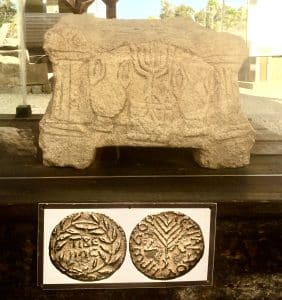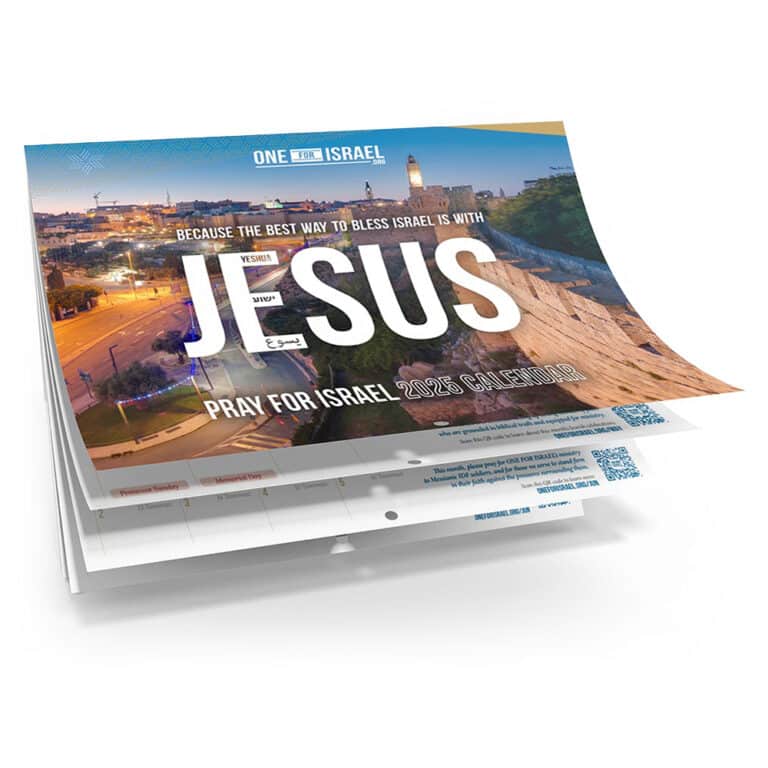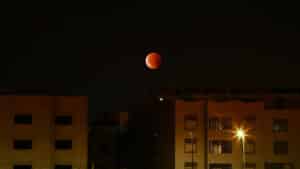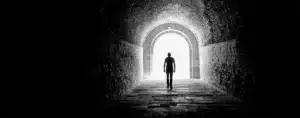Through the valleys of Israel there is a major commercial trade route, the Via Maris. Not so much in operation today, this ancient route has been throwing up new archeological discoveries in recent years which seem to point towards an intersection between Jews and Christians. It doesn’t take much to stumble across priceless artifacts when digging in Israel, and sure enough, valuable treasures are constantly being discovered, often in a very timely manner. The stones have something to say.
What is the Via Maris?
Much as Abraham once traveled from Ur in Mesopotamia to Egypt through the land of Israel, so an ancient commercial trade route, 1770 miles long, connected Egypt and Assyria. The part which ran along the Israeli coastline was known as “Via Maris” meaning “The Way of the Sea” and is mentioned in Isaiah:
But there will be no gloom for her who was in anguish. In the former time he brought into contempt the land of Zebulun and the land of Naphtali, but in the latter time he has made glorious the way of the sea, the land beyond the Jordan, Galilee of the nations (Isaiah 9:1)
The Via Maris took travelers along the Mediterranean Sea before cutting through the ridge of Mount Carmel into the Jezreel Valley. It is along this well-trodden path that two significant archeological finds have been discovered.
The first message: Jesus is Jewish
When seeking to build a new hotel beside the Sea of Galilee, an entire town was discovered buried underneath the surface: the town of Magdala. What was particularly exciting though was the synagogue in that town. And even more exciting than that, the stone stand from which the Torah would have been read.
 That stone, known as the Magdala Stone, has an image of the temple menorah carved into the side, and due to the dating of the synagogue, we can safely say that the artist’s rendition of the menorah was of the one standing in the second temple. The one Jesus would have visited in Jerusalem. This stone is so remarkable that it has been taken to be exhibited all around the world, and has only recently return to its place in Magdala.1
That stone, known as the Magdala Stone, has an image of the temple menorah carved into the side, and due to the dating of the synagogue, we can safely say that the artist’s rendition of the menorah was of the one standing in the second temple. The one Jesus would have visited in Jerusalem. This stone is so remarkable that it has been taken to be exhibited all around the world, and has only recently return to its place in Magdala.1
It had been a matter of debate whether such synagogues existed while the temple was still standing but this adds to the solid archeological proof that indeed they did.2 The synagogue dates back to the first century AD, and would have been operational in the time of Jesus.3 That means He would surely have visited this place, since the New Testament tells us He visited all the synagogues in that area. The site of Magdala is therefore of great interest both to Jewish people and also to everyone who loves Jesus.
It also highlights His Jewish identity in case anyone had forgotten that, and sets Him squarely in His Jewish context.
Tour groups come regularly, both Jewish and Christian, and it is a great intersect of interest for everybody—the crossroads between Jewish and Christian history, a place of meeting and encounter.
The second message: Jesus is God
Another relatively recent discovery was stumbled upon along the Via Maris while a prison was being built at Meggido in the Jezreel Valley. Underneath the top layers of earth an ancient mosaic was found, dating back to the third century AD.
The huge mosaic, 54 square metres in size, was part of a prayer hall. There are two main reasons to believe that it was no ordinary Jewish prayer house. Firstly, the mosaic features the familiar image of the fish, which was a symbol of early Christianity. Secondly, and more crucially, it has this testimony inscribed in Ancient Greek: “To the God Jesus Christ”. It is evidence that 1800 years ago, believers were gathering in a prayer house in the Jezreel Valley to worship Jesus as God.
It is in fact the earliest evidence we have that Israeli followers of Jesus recognized His deity.
Moreover, it has been discovered that the prayer house had been funded by a gentile Roman believer! This prayer house in the middle of a mixed Jewish and Gentile village reflects the reality that Jewish and Gentile believers were worshiping together as one back in the first centuries of the early church. It is the oldest such prayer house in the world, and was part of an ancient Jewish village called Kfar Othnai. However, there was also a huge Roman army encampment nearby and it was one of those Roman officers who had given from his own pocket to have the mosaic made.4
The message of the mosaic is then perhaps threefold:
- Jesus is God
- The cross has destroyed the barrier between Jew and Gentile, creating “One new man” in Jesus (Ephesians 2:15)
- The mosaic pieces represent the diversity of the body of Messiah, with our differences creating a beautiful picture as we come together, united in Him.
Abraham’s children, both Jew and Gentile, have been brought into the blessing and the promise of the Covenant God made with him all those years ago: a blessing to all the families of the earth.
- www.magdala.org
- New York Times, A Carved Stone Block Upends Assumptions About Ancient Judaism,
- www.jns.org/step-back-into-biblical-times-at-the-magdala-center
- HaAretz, A Jew, an Early Christian and a Roman Meet in Archaeological Park to Be Built on Evacuated Prison. ‘God Jesus Christ’ mosaic, ancient Jewish-Samaritan village of Othnay, Ruth Schuster, March 8th 2018
















